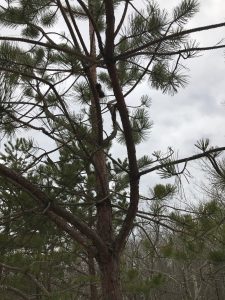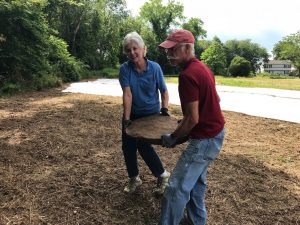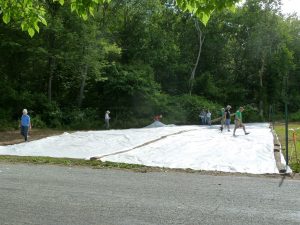
The long-fought battle to protect and preserve the remaining acres of the Oswegatchie Hills coastal forest in Southeastern Connecticut continues. These iconic lands hold snapshots of our history, as well as scenic terrain and increasingly rare native habitats.
Ridgetop forests such as the Oswegatchie Hills in East Lyme are some of the last remaining terrains where Pitch Pines can be found and can continue to survive. Colonial settlers, farmers, and shipbuilders depended on this native conifer for its resinous sap and sturdy wood. Disappearing habitats, lack of fire, and crowding out by faster growing oaks have resulted in the Pitch Pine/Scrub Oak landscape being the most decimated upland ecosystem in the state.
Last year the Friends of the Oswegatchie Hills Nature Preserve (FOHNP) set out to identify, nurture, and expand Pitch Pine stands in the existing 460-acre preserve. FOHNP is consulting with foresters from Connecticut’s Department of Energy and Environmental Protection, Groton Open Space Association (GOSA), and others to garner insights and make plans for a Pitch Pine tree nursery and ecosystem demonstration area where saplings can be transplanted to existing stands in the preserve. Some Pitch Pines will also be grown to maturity around the nursery.

While the volunteers hope to conserve the existing stands of Pitch Pines and scrub oaks in the existing preserve, their ultimate goal is to add the adjoining 236 acres of coastal forest to the preserve. It’s highly likely that this northern end of the ridge also supports Pitch Pines, but FOHNP and fellow conservationists haven’t been able to complete a natural resources inventory on the developer-owned land.
FOHNP has been trying to protect the entire remaining Oswegatchie Hills as a town preserve since 2001 when the organization was formed. CFE joined that legal battle in 2015.
“I’ve personally been a part of and witnessed the results of a concerted effort to help ensure the survival of a one time dwindling species in coastal Connecticut, ospreys. I believe the same can be done in the Hills with the pitch pine ecosystem. It won’t happen if we don’t try” said Greg Decker, FOHNP president and Stewardship Chair.

The tree nursery is a collaborative effort with multiple allies and complementary interests. East Lyme’s parks and recreation department and conservation commission have endorsed siting the nursery on underutilized town land adjacent to the preserve. Local landscapers and master gardeners are planning native habitat gardens, walkways, naturalized seating areas, and educational signage that will explain the significance of the Pitch Pine/Scrub Oak ecosystem. This space will offer a gathering point to start guided hikes as well as a place to cool down, reflect, and relax after a magical hike in the Hills.
Watch for more progress this fall as the pitch pine nursery takes shape.
